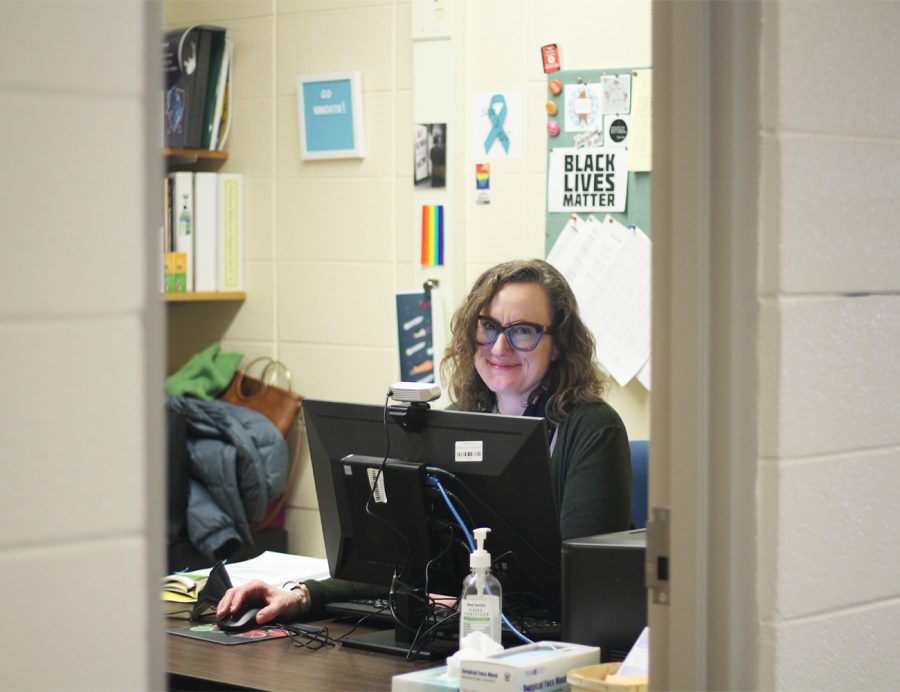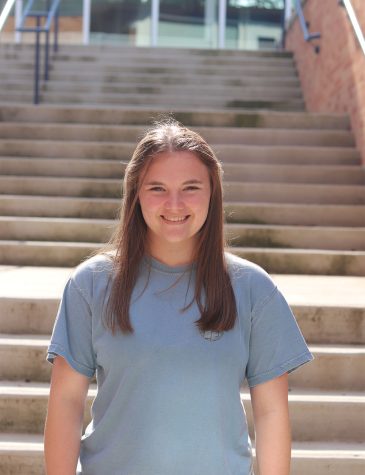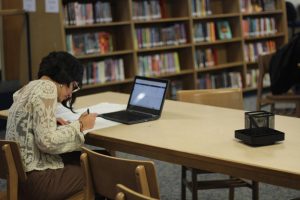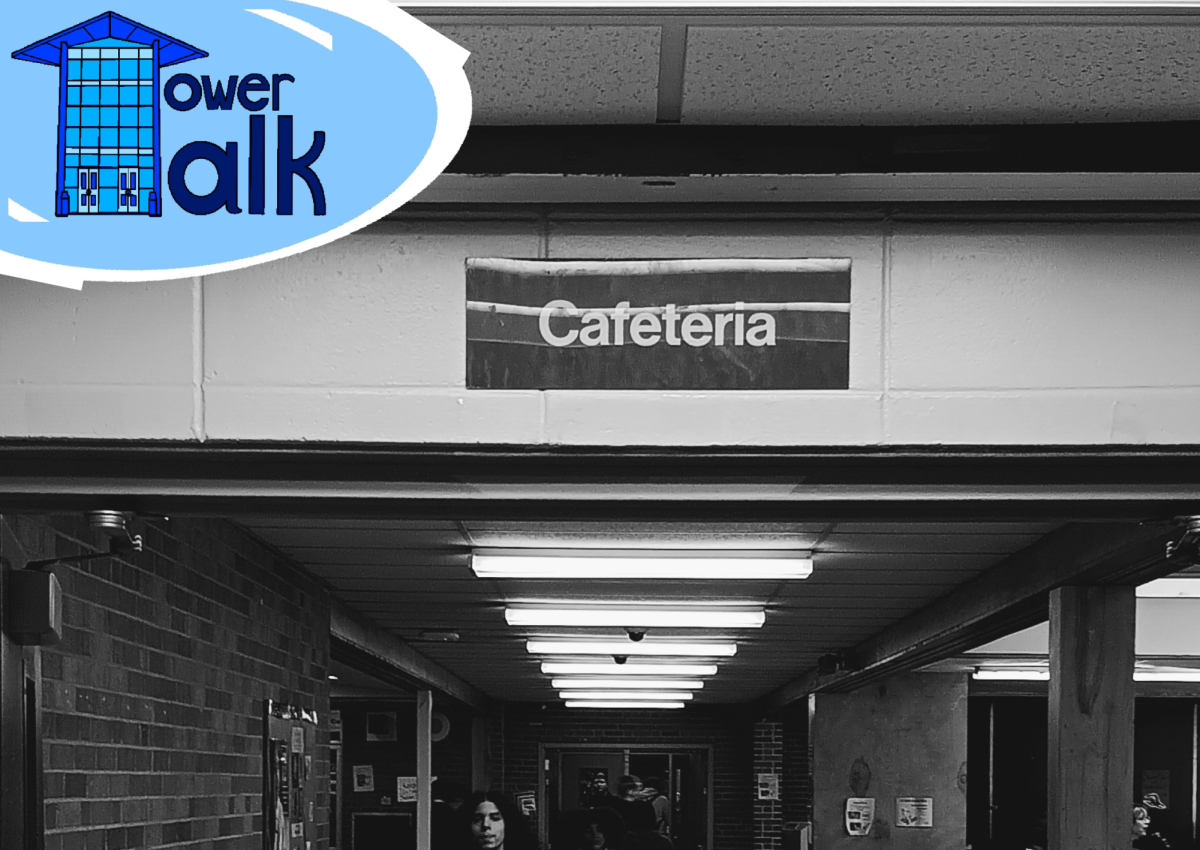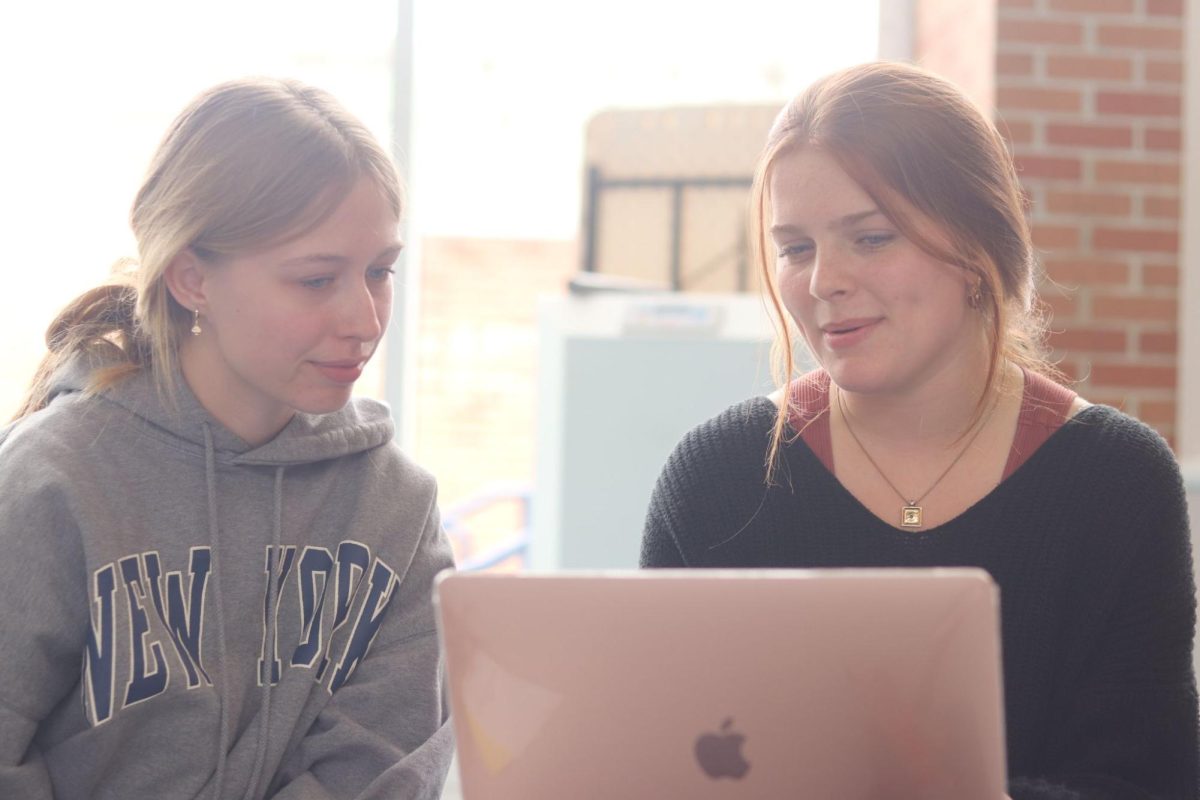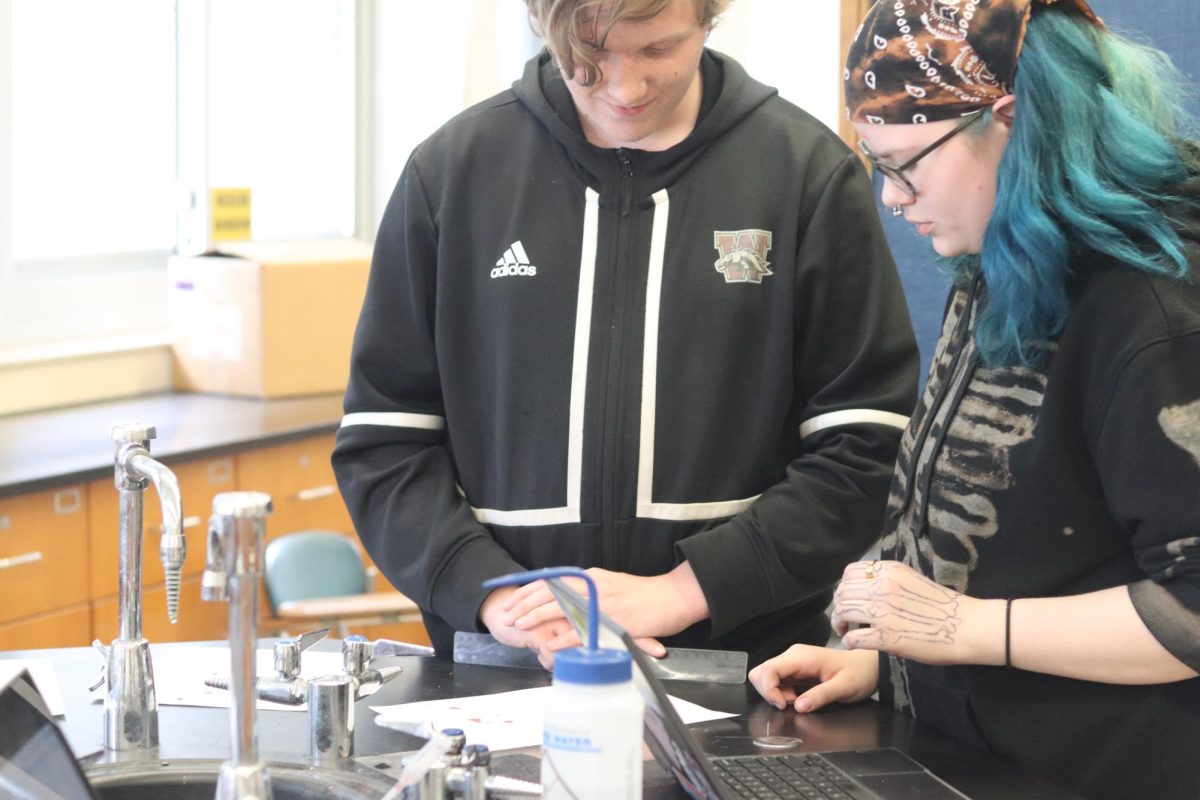High school counselors have too many students, but there aren’t enough resources to provide a solution
Credit: Hannah Locke
School social worker Kristen Jennings poses for a photo in her office. She shares the office with Patricia Gardenhire-Lamar who is the school’s clinical social worker. Their office can be found across the hallway from the main office and counseling office.
February 14, 2023
Academic achievement and post graduation success are strongly encouraged by the Kalamazoo Public Schools (KPS), and with an invaluable resource like the Kalamazoo Promise scholarship at students’ disposal, they have good reason to pursue education beyond high school.
However, access to school counselors is another invaluable resource that can boost academic achievement and post graduation success, but there aren’t enough resources being put towards this department and students suffer in turn.
School counselors are responsible for the academic, career and social development of students, according to the Michigan Department of Education.
At KPS high schools, counselors are tasked with making student schedules and fixing any issues that students have with those schedules, meeting with seniors to discuss post graduation plans, monitoring students’ credits, proctoring NMSQT tests, assisting students in crisis and more.
There were 18 hundred students enrolled at Loy Norrix High School as of October 2022, and only four school counselors. This makes for a counselor to student ratio of around 453:1. Such significant caseloads make it difficult for counselors to manage their tasks and give students the assistance they need in all areas of development.
“I would love to connect with my students more one-on-one or even in small groups because, with the way that our caseloads are right now, I really don’t get to know my freshmen until they’re older,” said Becky Parsons, the head of the Norrix counseling department.
According to the American School Counseling Association (ASCA), the recommended caseload for counselors is 250 students. In order for Norrix to meet that recommendation, around three additional counselors would need to be hired. This number of new hires would also be needed at Kalamazoo Central, as the two high schools must have the same ratio, according to the KPS Director of Secondary Education, Craig McCane.
In a study conducted by the ASCA in 2019 titled “Measuring the Impact of School Counselor Ratios on Student Outcomes,” a Connecticut school was funded by a research grant to hire the necessary amount of counselors to meet the ideal caseload.
The study found that Connecticut school districts that met the ideal caseloads “produce higher graduation rates, higher college entrance and persistence rates, lower chronic absenteeism rates and fewer suspensions.”
The inability for school counselors to meet the recommendations of the ASCA is a nationwide problem. According to the ACLU, the nation’s average student to school counselor ratio is 444:1. Michigan had one of the highest counselor to student ratios in the country: 693:1 in 2015 and 2016.
The lack of resources in KPS counseling departments is largely due to budget. The budget allocated to schools for counseling every year is based on enrollment which has remained relatively uniform in secondary schools in KPS.
“The enrollment numbers have been about the same or they’ve increased, so the allotment from the budget has not gone up,” said Director of Secondary Education Craig McCane. The lack of change, as well as the shift towards mental health in schools following the pandemic illuminates the need for greater budget allocation towards more counseling resources in schools.
According to a report provided by the CDC in 2021, “more than a third (37%) of high school students reported they experienced poor mental health during the COVID-19 pandemic, and 44% reported they persistently felt sad or hopeless during the past year.”
LN Dean of Students, Stephanie Perry, is in her first year at Norrix, but before she came here she worked as a school counselor for Linden Grove Middle School in KPS. She saw the decline in student mental health firsthand.
“We took on what we would normally see outside counselors doing, having to do that within the school system,” Perry said.
School counselors in KPS are trained to do brief counseling. If a student was to visit a counselor outside of school, they would have an uninterrupted session, but in school it’s different.
“At school, because of our caseloads, we can’t do that, so it’s more brief,” Perry said. “Our counselors do a really good job of giving the kids the amount of time that they’re needed in order to get back to class and be resourceful.”
More counselors means more resources for students that go beyond academic and career assistance like counseling, social emotional learning and mental health assistance. There would also be more in-depth academic and career help.
“I am here to help the whole student. I am here to help you be successful in school with academic, career, personal and social,” Parsons said.
The obstacles that prevent the hiring of additional counselors are made worse by the issue of student to teacher ratios.
“Four hundred fifty is not an ideal caseload. If we were to add counselors it would come at the sacrifice of teachers,” Norrix Principal Christopher Aguinaga said.
In KPS, teacher’s contracts state that there must be no more than 37 students per classroom. There is already a substitute teacher shortage that puts added stress on teachers and students alike, and if more of the budget was allotted to counseling, then it would come at the expense of teaching positions.
“So we try to find the perfect balance, but then also try to provide support either through KPS or through our community partners to help alleviate some of the stress that our counselors have,” Aguinaga said.
The primary organization that KPS hires to assist with student support is Communities In Schools. It is a non-profit organization and according to their website, their “evidence-based model connects students to caring adults and community resources.”
“We know at our core that the counselors have too many students based on recommendations and all you can do is try to limit what they are responsible for, so that they can prioritize the order in which they are executing things,” assistant superintendent Dr. Amy Vondra said.
There are also nationwide recommendations for social workers in schools. Social workers would be another great resource for students, and they would be an additional source of relief for school counselors.
Norrix currently has two social workers who are only present on select weekdays. Kirsten Jennings is the school social worker and is present on Mondays and Tuesdays and Patricia Gardenhire-Lamar, Norrix’s clinical social worker, is in the building on Friday mornings.
The KPS district has school social workers, whose priorities are special education, and there are five total for the entire district and one of those positions is unfilled for the time being. There are also clinical social workers who work for the district and they are available for more ongoing, direct services, like supportive counseling.
Both of these social workers can be reached through email or by asking a teacher or staff member to connect a school social worker, but the knowledge regarding Norrix social workers is limited.
A survey of 46 teachers at Norrix revealed that 87% of respondents are aware that there are social workers in the building, but only 20% know what days they are present in the building. Additionally, only 30% know the criteria under which a student should be referred to a social worker and only 26% know how to refer a student to a social worker.
“It’s an ongoing education attempt,” said KPS school social worker, Kristen Jennings. “We’ve worked really closely with the counseling department and social workers to help staff understand our role definition.”
Jennings feels that Norrix staff are a little more aware of her presence, as she attends staff meetings regularly and Norrix is her home school, meaning she is much more involved and visible.
According to the National Association of Social Workers cultural standards, “School social work services should be provided at a ratio of one school social worker to each school building serving up to 250 general education students, or a ratio of 1:250 students.”
Norrix essentially has a social worker to student ratio of 1:1800, three days of the week, and without the presence of a social worker being common knowledge among students and faculty alike, access to that resource is hindered.
“Young adults can seek me out on their own,” Jennings said. “I like to have my door open whenever I can and whoever tumbles in, for whatever reason, we figure out what’s going on and try to support.”
The number of students Jennings sees varies depending on the day. It can be from one or two to ten. She is a resource that is available to students whenever she is in the building.
“We actually tried to hire a significant number of social workers, and we didn’t have qualified applicants,” Dr. Vondra said.
This presents another barrier: the lack of qualified employees. Alongside the fact that teacher to student ratios must be prioritized, a lack of people available to fill job openings exacerbates the inability of the district to meet counselor to student ratio recommendations.
“Right now, if you were looking for counselors or teachers or clerical workers, the candidate pools are shallow to nil,” McCane said.
According to the National Education Association, “The federal survey found that 53 percent of public schools reported being understaffed at the beginning of the 2022-23 school year, and 60 percent said they had been grappling with open support-staff positions since the start of the pandemic.”
The lack of money and resources being placed into the counseling department comes at a cost to students, teachers and counselors alike.
So, the question presents itself: why isn’t there enough funding being put into counseling and mental health resources?
A possible source for mental health funding was the Elementary and Secondary School Emergency Relief Fund (ESSER) which was provided to education agencies by the Michigan Department of Education to “address the impact that COVID-19 has had, and continues to have, on elementary and secondary schools in Michigan,” according to the Department of Education.
The funding that KPS allocated to mental health support was limited.
According to the ESSER Spending Plan, released by KPS on December 2, 2021, almost $64 million was granted to the district through ESSER funds from 2019-2022. Of ESSER II and III funding, which was over $51 million, only $600 thousand was allocated to “Mental Health Support,” the expenditures of which were listed as trauma assessment and social and emotional learning interventions.
If these funds were equally divided among the 25 KPS schools, that only provides $24 thousand for mental health support per school.
The effects of more mental health and counseling resources on students are studied and proven. If funding was better allocated and jobs made more attractive to qualified applicants, then the district would see greater results in the academic achievement and post-graduation success that they consistently encourage.


